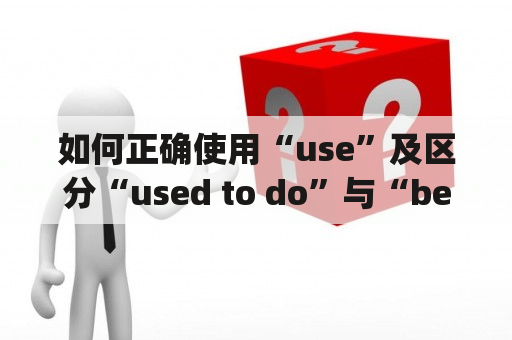如何正确使用“use”及区分“used to do”与“be used to doing”?
使用“use”指的是利用某物或某物品,常用于以下几种情况:

1. 描述人们如何使用某个工具或设备,例如:“He uses a hammer to nail the picture to the wall.”(他使用锤子把图片钉在墙上。)
2. 描述人们如何使用某种技能或能力,例如:“She uses her persuasive skills to convince her boss to approve the project.”(她利用自己的说服技巧说服老板批准了这个项目。)
3. 描述人们如何利用某个机会或资源,例如:“I use my free time to read books.”(我利用自己的空闲时间读书。)
相比之下,“used to do”和“be used to doing”的用法则稍有不同。
“Used to do”表示过去经常做的事情,而现在已经不再做了,例如:“I used to smoke a pack of cigarettes every day, but I quit last year.”(我曾经每天吸一股烟,但我去年戒烟了。)
“Be used to doing”则表示习惯于做某事,已经适应了这种做法,例如:“I am used to getting up early in the morning.”(我习惯早起。)
需要注意的是,“be used to doing”后面接的是“-ing”形式,而不是动词的过去式。
如果你想表示“曾经习惯于做某事”,可以使用“used to do”,而不是“be used to doing”。例如:“I used to be used to getting up early, but now I prefer to sleep in.”(我曾经习惯早起,但现在我更喜欢睡懒觉了。)
“use”可以用来描述人们如何利用某物或某资源,而“used to do”和“be used to doing”则分别表示过去经常做的事情和习惯于做某事。明确它们的用法,可以帮助你更好地理解和运用英语。
版权声明
本文仅代表作者观点,不代表看看头条立场。
本文系作者授权看看头条发表,未经许可,不得转载。
